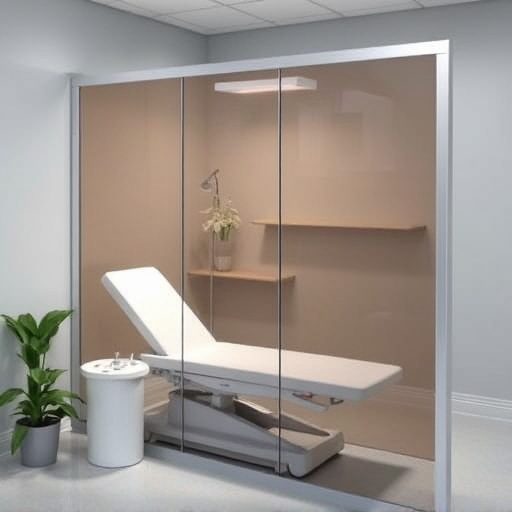TL;DR:
Engine Computer (ECU) recalibration optimizes engine performance and efficiency by adjusting key parameters like air/fuel ratios and ignition timing using specialized tools and software. For intake system enhancements, this process involves identifying components, accessing critical parameters (TPS readings, air/fuel ratios, VVT settings), fine-tuning intake air sensitivity, calibrating fuel mixture, and adjusting VVT. It's best performed by qualified professionals to avoid drivability issues or engine damage. Continuous testing ensures optimal intake performance tailored to individual preferences while maintaining fuel efficiency and emissions control.
In today’s sophisticated automotive landscape, understanding Engine Computer (ECU) recalibration is crucial for optimal vehicle performance. ECU recalibration allows fine-tuning of engine parameters, leading to improved fuel efficiency, enhanced power output, and reduced emissions. This article guides you through the process, focusing on key components, tools, and step-by-step adjustments specifically for intake systems. By mastering these engine computer adjustments for intakes, car enthusiasts can unlock their vehicles’ full potential.
- Understanding Engine Computer (ECU) Recalibration
- Key Components and Tools Required for ECU Recalibration
- Step-by-Step Process of Making Engine Computer Adjustments for Intakes
Understanding Engine Computer (ECU) Recalibration

Engine Computer (ECU) recalibration is a process that involves fine-tuning the parameters and settings within an ECU to optimize engine performance and efficiency. This advanced technology allows for precise adjustments, especially when it comes to engine intakes, by modifying air/fuel ratios, ignition timing, and other critical factors. By recalibrating the ECU, vehicle owners and mechanics can achieve better fuel economy, increased power output, and improved overall driving dynamics.
The process typically requires specialized equipment to interface with the ECU, allowing for accurate data logging and adjustments. Modern ECUs are complex systems, controlling various aspects of an engine’s operation, and any changes must be made with care to avoid potential drivability issues or even damage to the engine. Therefore, it often involves advanced knowledge and tools, ensuring that only qualified professionals or enthusiasts with expertise in ECU tuning should attempt such adjustments for intakes or other components.
Key Components and Tools Required for ECU Recalibration

Recalibrating an ECU (Engine Control Unit) requires a precise understanding and access to key components and tools. To make engine computer adjustments for intakes, among other systems, several essentials are needed. These include specialized diagnostic equipment like OBD II scanners and software that can interface with the ECU, allowing for detailed readings and programming modifications.
Additionally, physical components such as sensors (like mass air flow sensors and oxygen sensors), wires, and sometimes new hardware chips may be required to ensure accurate measurements and seamless communication between the ECU and other parts of the engine system. These tools and components collectively facilitate precise tuning, enhancing performance while also maintaining optimal fuel efficiency and emissions control.
Step-by-Step Process of Making Engine Computer Adjustments for Intakes

Recalibrating your ECU (Engine Control Unit) for optimized intake performance involves a meticulous process that requires precision and attention to detail. Here’s a step-by-step breakdown to guide you through making crucial engine computer adjustments specifically for intakes.
1. Identify and Connect: Begin by identifying the specific intake components you want to adjust, such as throttle bodies or air filters. Ensure you have the necessary tools, including diagnostic software compatible with your ECU, to establish a secure connection between your device and the engine computer.
2. Access ECU Parameters: Navigate through the diagnostic interface to access parameters related to intake air control, like throttle position sensor (TPS) readings, air/fuel ratio adjustments, and variable valve timing (VVT) settings if applicable. Take note of current values for reference.
3. Adjust Intake Air Sensitivity: Modify the ECU’s sensitivity to intake air flow by fine-tuning parameters like the TPS threshold or air volume calibration. These changes should match your desired intake performance, whether it’s enhancing power or optimizing fuel efficiency.
4. Calibrate for Optimal Fuel Mixture: Adjusting the air/fuel ratio ensures a precise balance between oxygen and fuel, leading to improved engine combustion and performance. Utilize the ECU’s diagnostic tools to test and adjust this ratio accordingly, adhering to manufacturer recommendations.
5. Fine-tune Variable Valve Timing (if applicable): For vehicles equipped with VVT, calibrate these settings to optimize intake valve timing, enhancing air flow and overall efficiency. Precise adjustments here can significantly impact engine performance and fuel economy.
6. Test and Verify: After making each adjustment, test the engine’s response and record results. Compare them against desired outcomes to ensure accurate and effective changes. Iterate through the process until you achieve the optimal intake performance tailored to your preferences.
In conclusion, understanding and recalibrating an ECU, particularly for engine computer adjustments related to intakes, is a complex yet rewarding process. By familiarizing yourself with the key components and tools needed, you can effectively tailor your vehicle’s performance. Following the step-by-step guide ensures precise changes, leading to optimal engine efficiency and improved driving dynamics. These adjustments are crucial for folks looking to unlock their vehicles’ full potential in today’s digital era.














